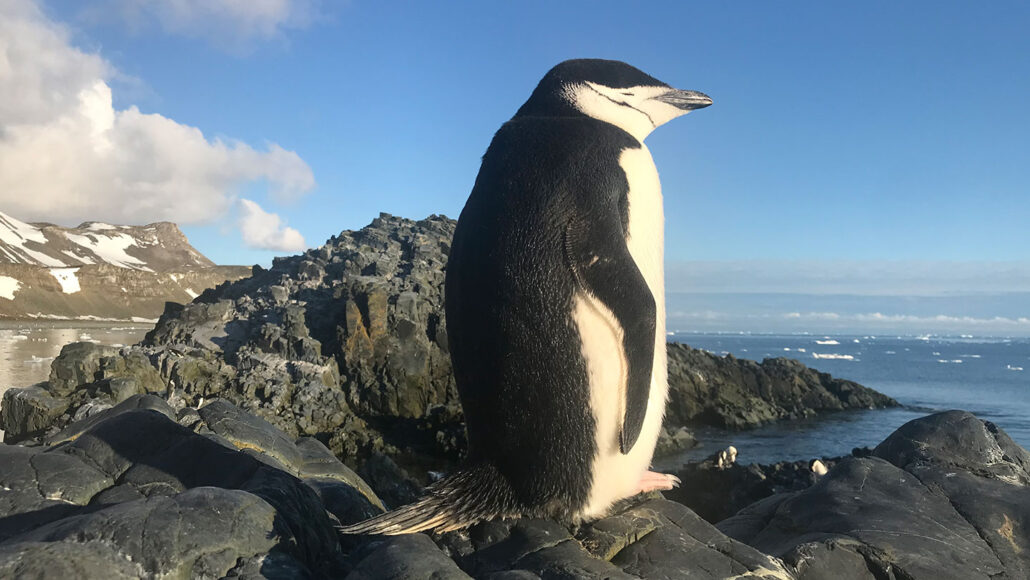Questions for ‘These penguins nap 10,000 times a day, for seconds at a time’

A chinstrap penguin (Pygoscelis antarcticus) gets a few precious seconds of shut-eye on King George Island. It’s off the coast of Antarctica.
W.Y. Lee
To accompany ‘These penguins nap 10,000 times a day, for seconds at a time’
SCIENCE
Before Reading:
- Describe your typical sleep pattern over 24 hours. What time do you typically go to bed and wake up? Do you tend to nap through the day? Come up with an animal that follows a different sleep pattern. Describe this animal’s typical sleep pattern to the best of your knowledge. Identify two specific differences in the sleep pattern of this animal compared with your own.
- Imagine you are sleeping the night in a hotel room or other unfamiliar place. Consider how your surroundings typically affect your sleep quality and describe two specific aspects or features of a hotel room that would improve your sleep quality. For example, you can consider things like noise level, temperature, level of disruption and anything else that comes to mind. Then, describe two aspects of a room that could potentially decrease your sleep quality.
During Reading:
- What is a potential advantage of the chinstrap penguin’s unusual sleep pattern?
- What did Won Young Lee notice about the sleep patterns of some seabirds on days-long flights?
- How long is a chinstrap penguin’s average nap?
- What unusual features of penguin-sleep patterns did scientists observe regarding the two halves of this animal’s brain?
- How many hours of sleep did each half of the penguin’s brain get per day?
- Describe one specific threat that the penguin’s unusual sleep pattern might help to guard against.
After Reading:
- This article focused on penguin sleep patterns during the breeding season. Take into account what you’ve learned in reading and make a prediction: Do you predict the frequent short-nap sleep pattern persists beyond the breeding season? Explain your answer. At least once, refer to details from this article to support your prediction.
- How is the unusual sleep pattern described in this story an example of animals adapting to their habitat?
Optional Task:
Imagine you are about to investigate the sleep patterns of a different type of penguin, the emperor penguin (Aptenodytes forsteri). After reading this article, come up with two questions regarding the emperor penguin’s habitat that, if answered, might help you better understand its sleep patterns. Explain how each question’s answer might point to specific sleep patterns. Do research to answer your habitat-related questions. Then, use the answers to those questions to predict the potential sleep patterns of emperor penguins based on that knowledge.







